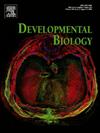发育中的膀胱和尿道的上皮和间质室室显示空间上不同的基因表达模式。
IF 2.5
3区 生物学
Q2 DEVELOPMENTAL BIOLOGY
引用次数: 0
摘要
下尿路由膀胱和尿道组成,由泄殖腔发育而成,泄殖腔是由尾部后肠形成的瞬时内胚层结构。泄殖腔隔膜形成泌尿生殖窦和肛门直肠后,膀胱逐渐从泌尿生殖窦的前部发育而成,而尿道则向远端延伸至生殖器结节。膀胱是再生和再造疗法的目标,但事实证明,设计不透水的膀胱上皮衬里具有挑战性。尿道上皮的功能,包括其作为活性免疫屏障的作用,在再生疗法中的研究很少,也被忽视。深入了解尿道窦上皮由周围间质形成的模式,同时考虑到性别差异,可为再生疗法提供依据。在这项研究中,我们在发育中的小鼠膀胱和尿道的上皮和间质中发现了空间上不同的基因,这些基因可能是下尿路模式化的潜在驱动因素。我们的数据揭示了上皮细胞中转录因子表达的空间限制域,它们与膀胱或尿道特异性分化相对应。此外,我们还发现了定位在发育中膀胱间质的基因 Wnt2、Klf4 和 Pitx2,它们可能是膀胱分化的潜在驱动因子。我们的数据显示,在发育中的尿道上皮中,包括 Cx3cl1 和 Cxcl14 在内的几个趋化因子基因的表达增加,这与尿道上皮相关巨噬细胞的增加有关。对上皮细胞和间质细胞的性别特异性差异的调查显示,男性和女性尿道中有几个基因表达不同,但膀胱中几乎没有性别特异性差异。通过比较发育中的下尿路在空间上不同的基因表达,我们的研究深入了解了胎儿膀胱和尿道的不同分化轨迹,这些分化轨迹确立了它们的成人功能。本文章由计算机程序翻译,如有差异,请以英文原文为准。

Epithelial and mesenchymal compartments of the developing bladder and urethra display spatially distinct gene expression patterns
The lower urinary tract is comprised of the bladder and urethra and develops from the cloaca, a transient endoderm-derived structure formed from the caudal hindgut. After cloacal septation to form the urogenital sinus and anorectal tract, the bladder gradually develops from the anterior portion of the urogenital sinus while the urethra elongates distally into the genital tubercle. The bladder is a target for regenerative and reconstructive therapies but engineering an impermeable bladder epithelial lining has proven challenging. Urethral epithelial function, including its role as an active immune barrier, is poorly studied and neglected in regenerative therapy. A deeper understanding of epithelial patterning of the urogenital sinus by the surrounding mesenchyme, also accounting for sex-specific differences, can inform regenerative therapies. In this study, we identified spatially distinct genes in the epithelial and mesenchymal compartments of the developing mouse bladder and urethra that could be potential drivers of patterning in the lower urinary tract. Our data revealed spatially restricted domains of transcription factor expression in the epithelium that corresponded with bladder or urethra-specific differentiation. Additionally, we identified the genes Wnt2, Klf4 and Pitx2 that localize to the mesenchyme of the developing bladder and could be potential drivers of bladder differentiation. Our data revealed an increase in the expression of several chemokine genes including Cx3cl1 and Cxcl14 in the developing urethral epithelium that correlated with an increase in epithelial-associated macrophages in the urethra. A survey of sex-specific differences in epithelial and mesenchymal compartments revealed several differentially expressed genes between the male and female urethra but few sex-specific differences in bladder. By comparing spatially distinct gene expression in the developing lower urinary tract, our study provides insights into the divergent differentiation trajectories of the fetal bladder and urethra that establish their adult functions.
求助全文
通过发布文献求助,成功后即可免费获取论文全文。
去求助
来源期刊

Developmental biology
生物-发育生物学
CiteScore
5.30
自引率
3.70%
发文量
182
审稿时长
1.5 months
期刊介绍:
Developmental Biology (DB) publishes original research on mechanisms of development, differentiation, and growth in animals and plants at the molecular, cellular, genetic and evolutionary levels. Areas of particular emphasis include transcriptional control mechanisms, embryonic patterning, cell-cell interactions, growth factors and signal transduction, and regulatory hierarchies in developing plants and animals.
 求助内容:
求助内容: 应助结果提醒方式:
应助结果提醒方式:


